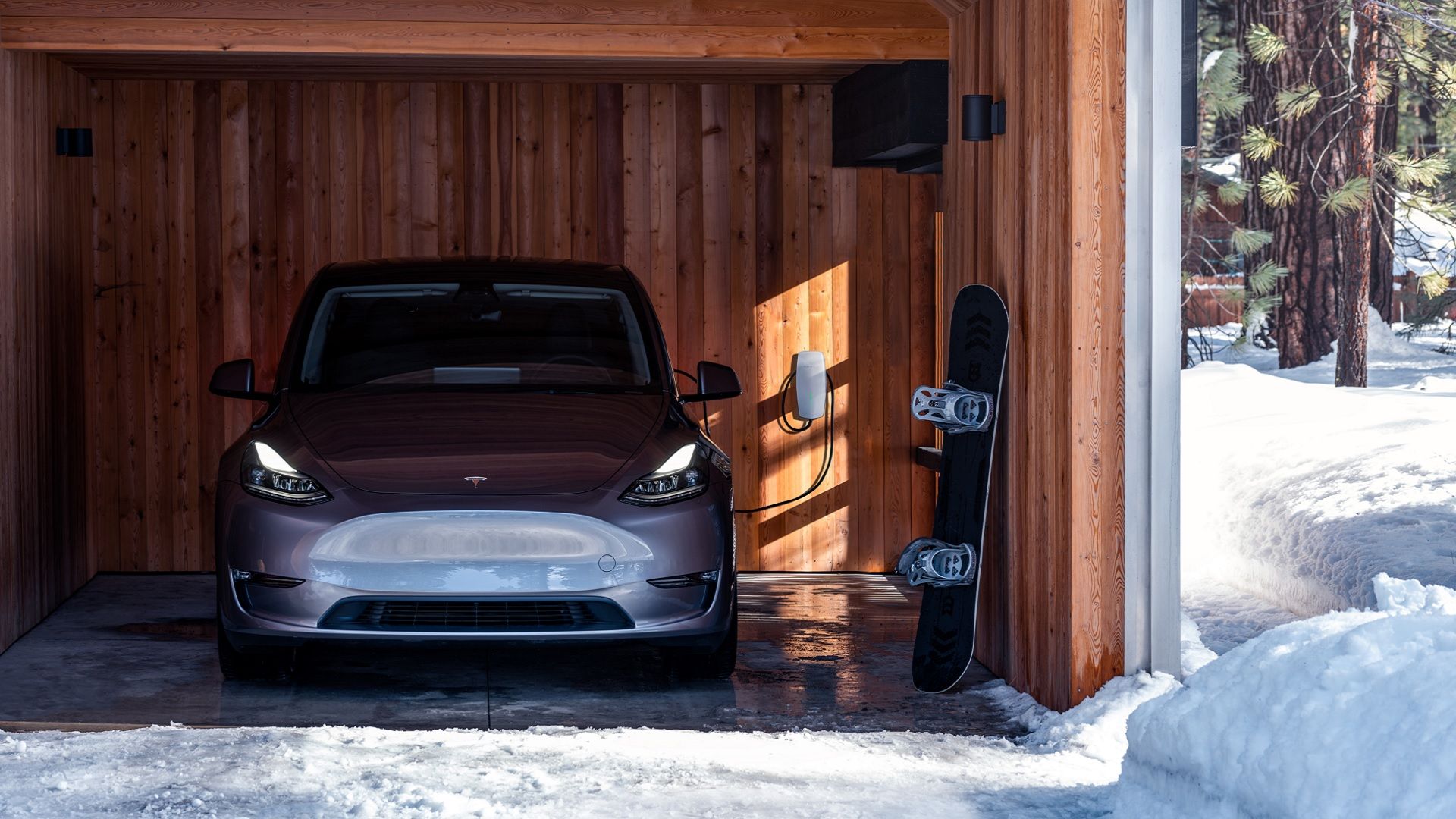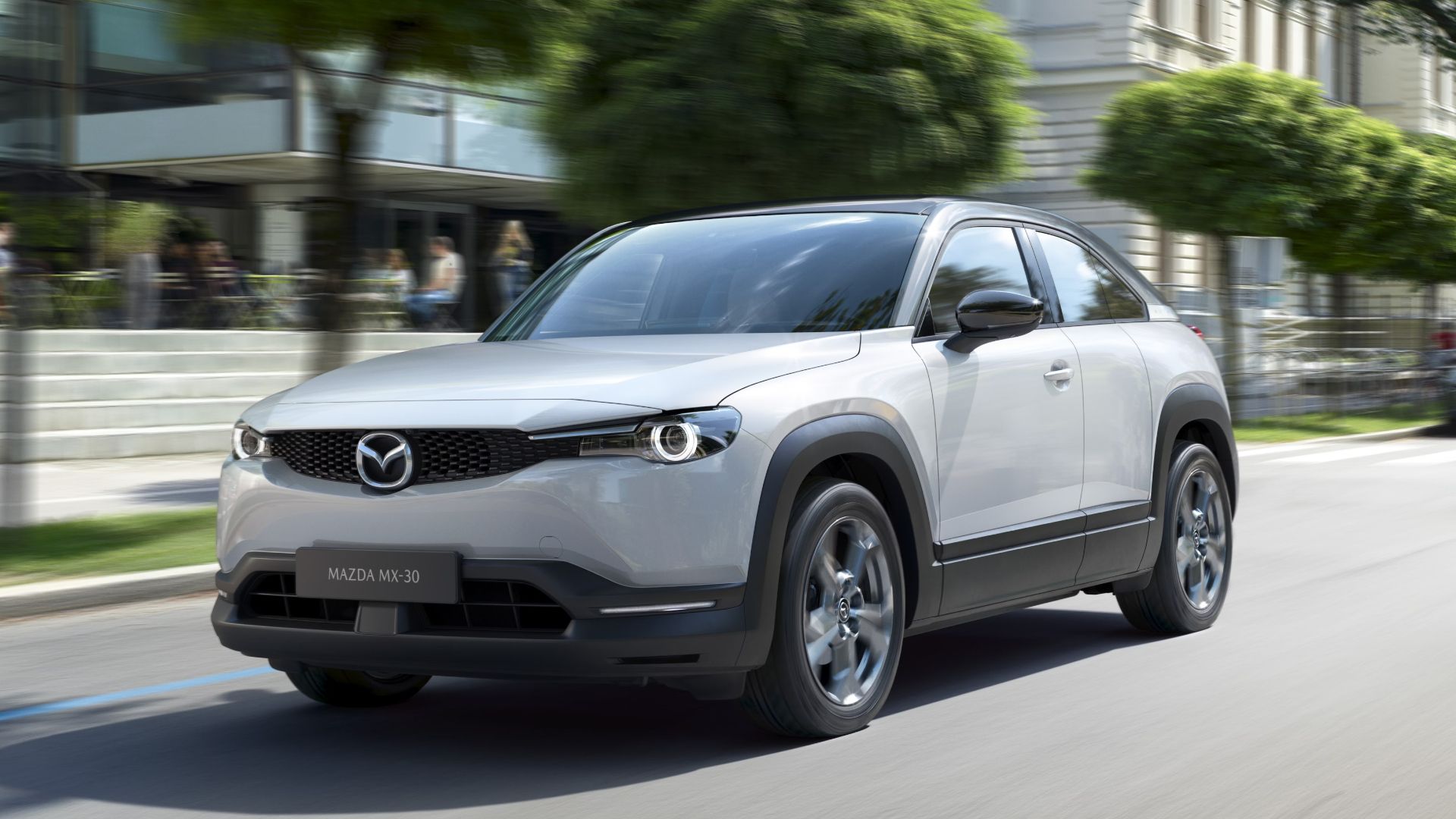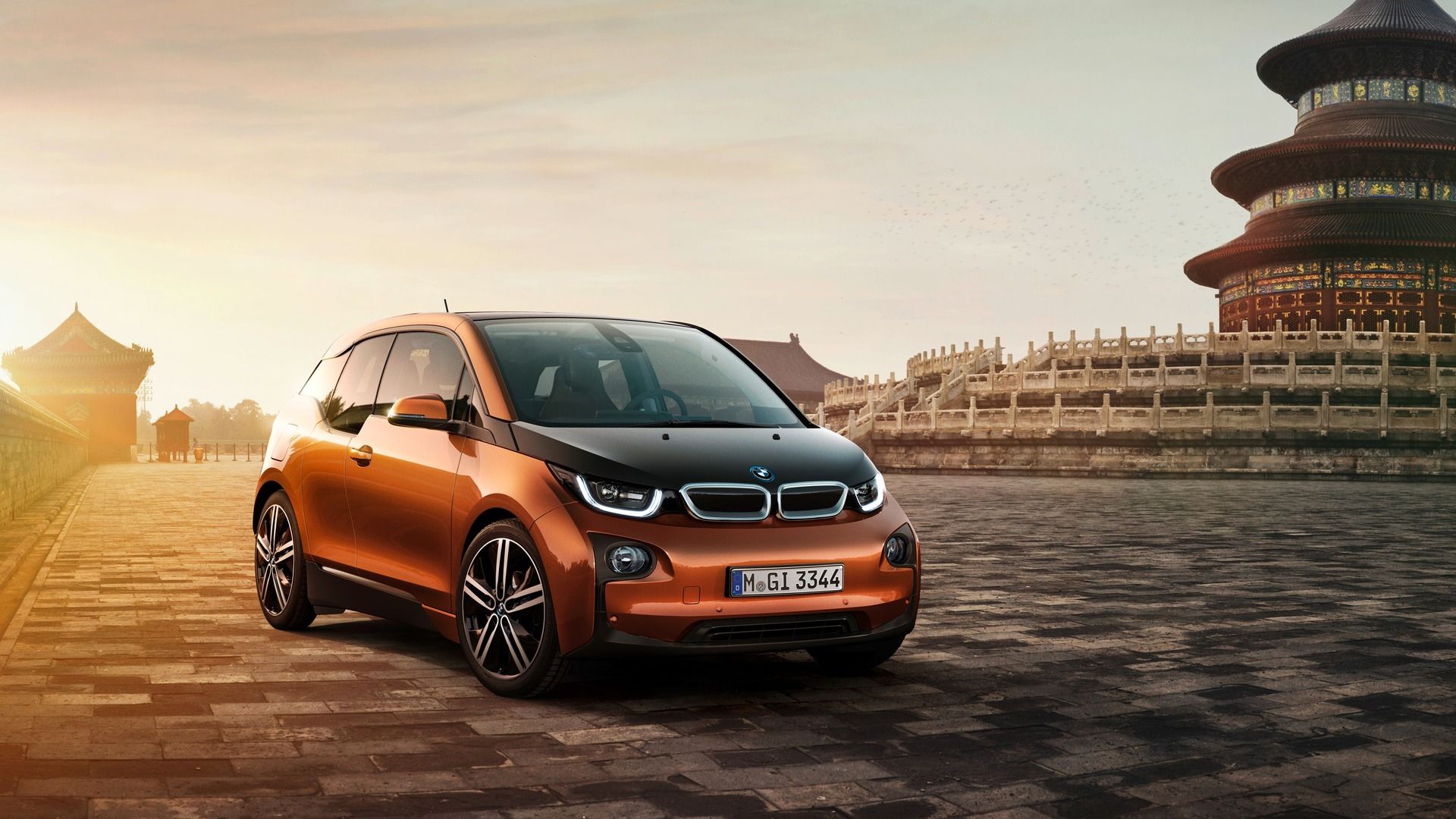Many automotive manufacturers have shifted their focus to electric vehicles, causing new advancements and systems within the EV industry. While EVs have significant benefits, one issue that is still trying to be solved today is range anxiety. Unlike your gasoline-powered vehicles that can fill up on nearly every corner, EVs don’t have the same luxury.
Although more charging stations have been built, it still doesn’t mean that it fixes the range anxiety issue. The Department of Energy Laboratory estimates that the U.S. will need 1.2 million public chargers by 2030. To put it into perspective, the U.S. currently has 175,000 charging ports. With EVs being on the rise in demand, some manufacturers have taken it into their own hands to find a solution to range anxiety.

Google News
Add TopSpeed to your Google News feed.
A range extender electric vehicle (REEV) is a twist that brings an onboard generator to power the battery when running low. While the models on the list have gasoline-powered motors for range extenders, some REEVs can contain an onboard electric battery to add more range. The interesting part, such as the models shown below, is that the gas-powered engines do not power the wheels.
Manufacturers such as BMW and Chevrolet have developed a gas motor that turns on when the battery depletes. This reduces emissions since the engine won’t be running the entire time and is powered only by pure electricity. While there are only a handful of models on the market today, it raises the question of whether this method fixes range anxiety or if it’s a loss cause.
UPDATE: 2024/10/12
This update adds three new models to the list, including a famous London taxi.
In order to give you the most up-to-date and accurate information possible, the data used to compile this article was sourced from various manufacturer websites and other authoritative sources.

Related
Searching for an EV charger can be both exciting and challenging. Take a look at the best EV home chargers that money can buy.
1
Fisker Karma (2012)
33 miles of electric range; 200 miles combined
This futuristic hybrid was designed to open a door for people to get their hands on an eco-friendly luxury EV. The CEO, Henrik Fisker, has an impressive portfolio of designing cars such as the Aston Martin DB9 and V8 Vantage. Unfortunately, this one-year production car had many flaws and remained nothing but a dream.
Notable Takeaways:
- The Fisker Karma came with a $100,000+ price tag.
- The 10.2 touchscreen had haptic feedback that adds to the sense of touch through vibrations.
- EcoStandard, EcoSport, and EcoChic were the three trims and had different interior and exterior styling.
- One of the first luxury plug-in hybrid electric vehicles.
- The roof acted as a solar panel to power interior features such as climate control, infotainment, and more.
The Good
Henrik Fisker saw Leonardo Decaprio, a known environmentalist, exit a Prius at the Oscars. This moment was when Henrik thought there should be eco-friendly cars that showcased luxury. While the model failed, the idea was worth noting, with companies like Tesla and Porsche developing EVs around sportiness and attractiveness years later. The innovations around the Karma were ahead of their time and would later be picked up by other manufacturers.
The Bad
The Karma had several issues that couldn’t be fixed after being released to the public. The biggest problem was it had a curb weight of 5,300 lbs, making it heavy for a sports car. The massive weight of the Karma was due to the GM-supplied four-cylinder engine and two 120-kW electric motors. The gasoline acted as a generator for a 20-kWh battery and together produced 402 horsepower.
Being a heavy car isn’t all terrible and can be looked past, but then people started experiencing coolant leaks, leading to multiple recalls. The fires from the leaks weren’t even the tip of the iceberg, which led to the demise of the Fisker Karma’s reputation.
2
Chevrolet Volt (2011-2015)
38 miles of electric range; 380 miles combined
The Chevrolet Volt had a decent production life, but several issues led to its discontinuation. There weren’t mechanical issues or people hating the Volt, it was GM’s marketing process and overall development of the car.
Notable Takeaways:
- A used Chevrolet Volt averages below $10,000.
- Low fuel cost compared to other cars in its class.
- The Volt has four driving modes to adapt to various situations. (Normal, Hold, Sport, and Mountain)
- A 240-volt outlet takes 3 hours to recharge a depleted battery.
- The additional packages (Premium and Enhanced Safety) had limited upgrades.
The Good
The Volt came with a 16 kWh lithium-ion battery which gave 38 miles of pure electricity range. When the battery is depleted, a 1.4-liter four-cylinder engine will take over and extend the battery range. While the Volt was destined to use its gasoline-powered engine, it surprisingly created minimal greenhouse gas emissions.
There was a generous number of entertainment and safety features that came standard. The Volt’s huge advantage over its class competitors was its excellent crash scores. Although the Volt comes off as an average car, it maintains an appeal for being an eco-friendly alternative.
The Bad
The Chevrolet Volt had few notable features, making it an unappealing car. One reason for its failure was its original MSRP. A 2014 Volt cost $34,995, which on paper wasn’t worth the price. The interior didn’t match the cost with its hard plastics and outdated designs. Space was an issue, too, with the backseats having little room and being cramped for two adults.
3
BMW i3 REx (2014-2021)
153 miles of electric range; 200 miles combined
One of the most, if not the best, range extender vehicles on the market is the BMW i3. While some of you might have giggled while passing this car on the road, there’s a reason why it lasted eight and a half years. This hybrid was the turning point for BMW to shift their future cars into becoming eco-friendly.
Notable Takeaways:
- The BMW i3 prices can range from $6,000 to $23,000 depending on the year.
- The i3’s body, minus the frame, is made up of carbon fiber composite.
- Thrives more in a European environment.
- 25% of the i3’s interior is used from renewable resources and recycled materials.
- It lacks technological features such as infotainment and Android auto.
The Good
BMW has designed beautiful cars over the years, which is evident in the interior of the i3. The inside has a futuristic design with high-grade materials that match BMW’s aesthetic. While other automotive manufacturers have struggled with compact cars and space, the i3 feels spacious for a car smaller than the Ford Fiesta.
BMW’s interior is iconic for its sleek and luxurious interior, but there is one trait that BMW is known for, and that’s sportiness. The i3 carries this trend over through its perky acceleration and smooth suspension.
The Bad
Due to it being a compact car, BMW opted to focus on passenger comfort, leading to minimal storage. One of the i3’s biggest downsides is its take on range anxiety. The i3’s range is far from that of other EVs and hybrids, and the gasoline-powered generator does not eliminate this issue. While the 42.2 kWh battery has a mediocre range of 153 miles, the 8-valve 647-cc inline-two only adds 47 extra miles when the battery is at five-percent.
4
Mazda MX-30 R-EV (2024)
53 miles of electric power; 423 miles combined
Mazda believes it has found a solution to its short driving range by bringing back an iconic engine variant. The MX-30 e-Skyactiv R-EV will house the first rotary engine since the RX-8 sports car.
If you’re new to the automotive industry, Mazda is known for its iconic rotary engines, which play a huge part in their legacy. While previous rotaries have failed emissions and fuel efficiency tests, Mazda plans to do the opposite with the MX-30 R-EV.
Notable Takeaways:
- The MX-30 R-EV is nearly identical to the EV version other than new badging and wheel design.
- The 13-gallon fuel tank used on the R-EV is larger than other “range extenders” such as the Volt and i3.
- MX-30 R-EV has 167 horsepower, which is 24-hp more than the EV version.
- Mazda has not given up on the future of rotaries.
The Good
Mazda’s take on a gasoline-powered engine used as a generator is one of the few promising models that might succeed. The R-EV has downsized its battery from previous years with a 17.8 kWh lithium-ion pack. The battery alone is disappointing because it only allows a 53-mile range, but when the battery becomes depleted, the rotary engine kicks in.
An 830-cc 74 horsepower rotary engine turns on and generates power to provide additional range to the battery. On paper, the powertrains used in the MX-30 R-EV provide good numbers compared to full EVs such as the Tesla Model Y.
The Bad
Mazda has yet to release any information on whether the MX-30 R-EV will make its way to the States. The prior generation was discontinued in 2023, but it wouldn’t be the first time a model has been discontinued and brought right back to the market. Americans can only hope and cross their fingers that this solution to EV range anxiety will touch down in the West.

Related
The Real Reason Why The Electric Mazda MX-30 Was Discontinued
Explore how range anxiety, design choices, and market competition contributed to the end of Mazda MX-30.
5
Ram 1500 Ramcharger (2025)
145 miles of electric range; 690 miles combined
The Ram 1500 Ramcharger can be seen on the horizon and is the newest REEV being sold stateside. Ram is known to be competitive in the truck industry, and it may come as a surprise that they’re invested in developing some electric-based trucks.
Notable Takeaways:
- The Ramcharger will feature one-pedal driving mode.
- A wide array of safety features, such as active lane management, collision assistance, and evasive steer assist.
- Adjustable suspension ride height for towing, off-road, and sport use.
- The Ramcharger utilizes an STLA steel frame that provides support to the truck and battery.
- A 4.8-kilowatt battery located in the bed provides external power.
The Good
Unfortunately, the 70.8 kWh battery won’t be paired with a big boy Hemi, but it isn’t small either. A 3.6-liter V-6 engine will add 545 miles of range, which is pretty impressive. Not only does the Ramcharger eliminate range anxiety, but it also packs some heavy performance.
The dual powertrains provide 663 horsepower and 615 pound-feet of torque. A truck needs a good bit of power in order to tow, and Ram knows a large portion of their vehicles are used just for that. Ram claims the max towing capacity is 14,000 pounds which is more than its gasoline-powered siblings.
The Bad
While the Ramcharger isn’t publicly available just yet, it makes it hard to find its flaws. Range anxiety doesn’t look like it will be a problem, but another area that EVs have issues with continues in the 1500. The towing capabilities are impressive for a hybrid, but it has been noted that hybrids lose efficiency when towing heavy loads. So, there will be a loss of range and fuel economy when towing the Ramcharger.
6
Vauxhall/Opel Ampera (2011-2015)
50 miles of electric range; 310 miles combined
The Vauxhall/Opel Ampera, launched in 2011, was the first REEV from a European brand. It was a sister car of the American Chevrolet Volt. The Chevy’s early premiere gave Opel the opportunity to iron out some of the model’s kinks before availing it to European buyers.
Notable Takeaways:
- A 0-60 MPH time of around nine seconds and a top speed of 100 MPH.
- It featured the first mass-produced battery pack that could be cooled or warmed.
- The Ampera was the best-selling European EV in 2012.
- It won the Monte Carlo Rally for alternative propulsion systems and electric cars.
- A range of over 310 miles.
The Good
Opel did a stellar job designing the Ampera – at the time, it was one of the better looking electric cars. The manufacturer gave the interior a futurisitic vibe, replacing the conventional instrument cluster with a configurable digital instrument panel. It also featured another seven-inch display that served as the infotainment screen and controls panel.
Despite packing an engine, fuel tank, batteries, and a fuel tank into one package, the Ampera had plenty of passenger space. Furthermore, the Opel had four driver modes – Normal, Sport, Mountain, Hold-charge – allowing the driver to optimize energy usage according to driving conditions.
The Bad
The trade-off for enhanced passenger room was reduced cargo capacity. Also, the Ampera only had room for four passengers, while other hatchbacks offered room for one more. Another gripe was that the heavy Opel lacked a sporty edge. Further, though the Ampera looked good, it’s low-slung nature sometimes made simple things like clearing high speed bumps or awkward curbs a complicated exercise.
7
LEVC TX Taxi (2024)
78 miles of electric range; 255 miles combined
Chinese carmaker Geely introduced the LEVC TX in 2017 through its subsidiary London EV Company (LEVC). The LEVC TX is a carriage that mostly operates as a taxi in various cities in countries like the UK, Germany, and India. The model received an update in 2024 that optimized energy efficiency, and consequently, range.
Notable Takeaways:
- An all-electric range of 78 miles with the recent upgrade.
- Acres of passenger room, with standard seating for five passengers.
- Vista trims feature a wheelchair ramp.
- Climate control system for the passengers controllable via buttons in the rear compartment.
- Decent top speed of 80 MPH.
The Good
Size is a major advantage for the electric black cab. It is tall and wide, enhancing egress and ingress, and has aids like a wheelchair ramp and a chair that rotates out to facilitate entry for a passenger with a disability. Furthermore, a harness under the floor can be used to secure a wheelchair. The base trim features seating for five, while the Vista trim increases passenger capacity to six.
A sunroof enhances the interior and gives passengers an unhindered view of their surroundings. The LEVC TX also features a modern suite of active and passive safety features. Through LEVC’s partnership with luxury car dealer Clive Sutton, buyers can transform their TX’s into upscale passenger vehicles.
The Bad
Firstly, the LEVC TX lacks cargo space behind the rear seats. However, there is about 16 cubic feet of cargo space next to the driver where the passenger seat would normally be. Secondly, the infotainment screen is outdated. Geely, the company behind tech-heavy brands like Polestar and Volvo, should do better. Lastly, the LEVC TX taxi is expensive, with the base model costing around $85,000.

Related
Here’s How Extended Range Electric Vehicles Work
Extended-range electric vehicles aren’t a new concept, but only a few have ever been sold in the United States.
8
Li One (2019-2022)
116 miles of electric range; 670 miles combined
Produced from 2019 to 2022, the Li One was Li Auto’s first production vehicle. The luxury electric SUV received a midcycle refresh in 2021 that increased its range. Nevertheless, Li Auto discontinued the model in 2022 to create space for the Li L8.
Notable Takeaways:
- Infotainment and driver information screens spanning nearly the entire width of the dashboard.
- Luxury features like massage and heated front and rear seats.
- An all-electric range of around 116 miles.
- Space for six or seven passengers.
- Standard Android Auto compatibility.
The Good
The Li One doesn’t skimp on luxury. Standard features include a heated steering wheel and massaging front and rear seats. Convenience features include an induction tailgate, a 360-degree panoramic view, and three-zone air conditioning. A dizzying array of displays cover the dashboard, including a 16.2-inch central control screen, a passenger entertainment screen, a 12.3-inch digital gauge cluster, and a 10.1-inch function control display.
The model comes with a long list of driver aids, including merging assist, active braking, and a voice recognition control system. Another Li One strong point is its range. With the batteries fully charged, the refreshed 2021 model can travel 116 miles without activating the turbocharged inline-three engine. Furthermore, it has a combined range of over 670 miles.
The Bad
The Li One’s longevity and durability are uncertain considering the fledgling nature of its manufacturer and the fact that it had a short stint in the market. Also, the tariffs imposed on Chinese-built electric vehicles could raise the Li One’s price out of the reach of many midsize SUV buyers.
